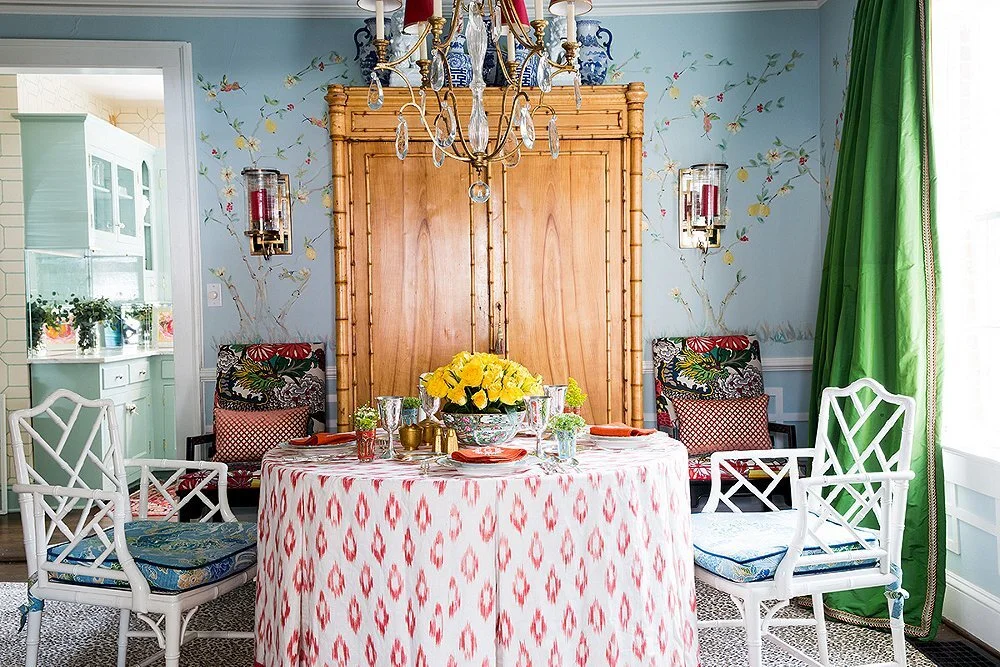Staging Tips from Vintage 61 Storehouse
Staging furniture and interior spaces is a versatile skill to have. Knowing a few tricks of the trade will help you sell your painted furniture in your retail space, sell a home on the real estate market, set up for special events like weddings and parties or jazz up the current layout of your home decor.
However you use the skill of staging, we’ve got some great tips to share from Vintage 61 Storehouse!
Vintage 61 Storehouse
This gem of a shop is located in Orwigsburg, Pennsylvania and is owned by Laura Hughes. In addition to being one of our fabulous retailers, Laura has an absolutely gorgeous shop! It’s a sprawling, drool-worthy treasure trove of home decor, decorative paints and antique finds. We had the pleasure of touring it a few years ago, and we know anyone who visits is in for a treat!
Laura and her team often go live on our Facebook page to share their love of Miss Mustard Seed’s® Milk Paint. Last week, they shared how to take a piece of furniture from the prep phase all the way to staging it in a room.
Today, we’re going to highlight some of the fabulous staging tips their resident Interior Designer, Kathy, provided during the live.
Pick an Inspiration or Anchor Piece
Laura and her team recommend starting the staging process with a special piece. It could be a picture, piece of furniture, quilt or even a set of curtains. You can build an entire room around a single point of inspiration!
During their live, the Vintage 61 Storehouse team used a sweet wooden chair as their starting point. They refinished it using Mustard Seed Yellow and created an entire bedroom scene around it. You can see the inspiration chair on the right.
Add Splashes of Complimentary and Analogous Colors
Once you have your anchor piece, you can base the rest of your design decisions around it. Kathy, recommends adding splashes of color with throw pillows, artwork and soft furnishings.
Complimentary Colors
Complimentary colors are those that are opposite one another on a color wheel.
Image Source: Google
As you can see in the photo above, the complimentary colors to yellow are violet, indigo, plum and burgundy. These colors can be incorporated through bed linens, artwork on the walls or in fresh flowers. In the bedroom scene, the ladies could have turned the sheets down to show a peek of purple linens underneath.
You can also add varying tints and shades of your focus color to break it up a bit. In their bedroom scene, Kathy added a pillow to the chair that has a slightly brighter tint of yellow. The bed linens are beiges and creams - all different tints of yellow.
Analogous Colors
Analogous colors are those right next to one another on the color wheel. Yellow and Green are analogous and are pleasing to the eye when grouped together. Take the additions of the wreath above the bed and the vase of flowers for example.
Use a Variety of Textures and Shapes
As Kathy was dressing the gorgeous Eastlake style bed, she chose lots of different textures and patterns for the bed linens. The chenille bedspread has parallel veins of tufts while the throw pillows have a diamond geometric pattern with tassels. Right behind them are a few pillows with little round pom-pom’s.
By using round, square and linear patterns, your eyes naturally wander around a space as you take in all of the different shapes.
Incorporate Unexpected Elements
Have you ever been to a shop or seen a home on television that has a “wow” factor? Perhaps it’s a bold wallpaper print or a plush green velvet couch. Adding unexpected elements into your space (whether it’s professional, personal or retail) keeps things exciting and engaging.
Kathy added a gorgeous steamer trunk at the foot of the Mustard Seed Yellow bed for an unexpected surprise.
The trunk has a beautiful age to it and adds warmth to the space. The rich wood tones tie in seamlessly with the wooden tray on the washstand and the sweet side table. Plus, it’s a functional place to store linens and put your shoes on in the morning.
Mix Old and New - Grandmillenial Style
Grandmillenial is a decor trend that has always been around in theory, but is gaining popularity with millennials (anyone born between 1980 and 1995). It’s essentially taking the charm of grandma’s treasures and updating them to suit the needs and tastes of the modern 30 year-old.
Some Grandmillenial spaces are a bit more flamboyant and grandiose than others. Take this space for example:
Photo Source: One King’s Lane
Image Credit: Laura Negri Childers & Mallory Mathison
Grandmillenial style can be quieter and more subdued than this. Adding hints of new and old doesn’t have to happen on such a grand scale. The Vintage 61 Storehouse bedroom is a great example!
The flowers, throw pillow, lamp, artwork and mirror are all relatively new pieces. The furniture and linens are either antique or vintage. They all blend together to create a timeless aesthetic, which is quintessential Grandmillenial!
Lots and Lots of Light
There’s nothing more confining than being a dimly lit space with dark colors and imposing decor. It’s stuffy and claustrophobic. Even if the decor color is bright and cheerful, without proper and adequate lighting, everything will come off as dull and lifeless.
Lighting is what breathes life into any space. Through the use of fixtures like table lamps, chandeliers and overhead lighting, you can easily reflect your personality and brighten your space.
Hanging mirrors here and there is a clever way to bounce light around a room. White elements like alabaster lamps and whitewashed dressers can also bounce light!
Vary Heights
If you notice the image above, there are lots of different height levels shown. The bed, mirror and artwork all fall in the same plane. Then you have the table lamp, pillows and vase of flowers. The washstand and accent table sit at the same height, while the bed and small yellow chair off to the right finish the last layer.
Be creative with the ways you add height to your space. The table lamp is perched on top of an old book to elevate it to the same level as the flowers. Stacking small decorative elements on top of one another in unexpected ways is a great way to add height using what you already have on hand.
Don’t Over-Stage
If you sell for a living, you may be tempted to pack your retail space to the brim. We’ve all seen booths in antique shops that are so packed in that it’s impossible to see anything!
While it’s a good idea to utilize your square footage, there’s a fine line between well-stocked and hoarding. When customers see a dresser or table covered in smalls (frames, books, ironstone, wreaths, etc.), they’re less likely to investigate it. They either don’t want to bother anyone to clear it off, or would rather move on to a piece they can easily peruse. Some customers may overlook a piece entirely because it’s practically buried under clutter! If you want your customers to see the beautiful grain of a wood top, the intricately carved handles or hand-cut dovetailed drawers, then make it easy for them to do so.
By following the guidance of Kathy and the rest of the Vintage 61 Storehouse team, you can create a selling space where everything fits together. If customers can see how all of your items work with one another, not only will it be easier for them to shop your space, but they will probably buy a cluster of items to recreate your look at home!
You can watch the full Facebook Live broadcast on our Facebook Page or on our YouTube Channel!
We hope you have taken away a little nugget or two from this list of staging tips. Which one resonated with you the most? Leave us a comment and share what you’re going to try in your home or retail space! We’re going to give that whole complimentary color concept a try.
If you’d like to connect with Laura and her team over at Vintage 61 Storehouse, you can follow them on Facebook.
Make sure you pin this post for future reference too! Share with your furniture buddies and fellow home decor lovers.










